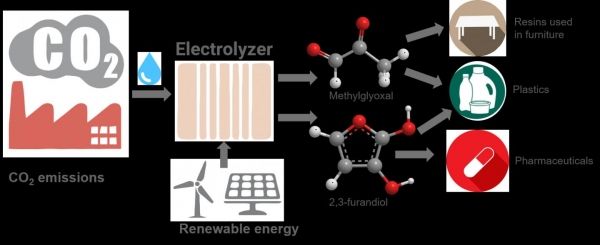Rutgers scientists have developed catalysts that can convert carbon dioxide – the main cause of global warming – into plastics, fabrics, resins and other products.
The electrocatalysts are the first materials, aside from enzymes, that can turn carbon dioxide and water into carbon building blocks containing one, two, three or four carbon atoms with more than 99 percent efficiency. Two of the products created by the researchers – methylglyoxal (C3) and 2,3-furandiol (C4) – can be used as precursors for plastics, adhesives and pharmaceuticals. Toxic formaldehyde could be replaced by methylglyoxal, which is safer.
The discovery, based on the chemistry of artificial photosynthesis, is detailed in the journal Energy & Environmental Science.
“Our breakthrough could lead to the conversion of carbon dioxide into valuable products and raw materials in the chemical and pharmaceutical industries,” said study senior author Charles Dismukes, Distinguished Professor in the Department of Chemistry and Chemical Biology and Department of Biochemistry and Microbiology at Rutgers University–New Brunswick. He is also a principal investigator at Rutgers’ Waksman Institute of Microbiology.
Read more at Rutgers University
Image: This image shows how carbon dioxide can be electrochemically converted into valuable polymer and drug precursors. (Credit: Karin Calvinho/Rutgers University-New Brunswick)


